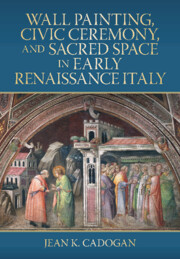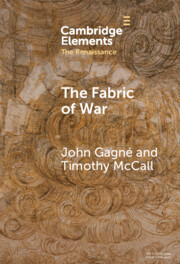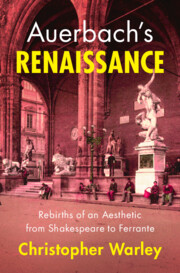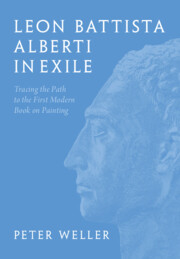Refine search
Actions for selected content:
130 results
1 - Opportunities and Challenges in China’s Economic Development
-
- Book:
- Demystifying the Chinese Economy
- Published online:
- 12 December 2025
- Print publication:
- 08 January 2026, pp 1-21
-
- Chapter
- Export citation
8 - Some Historical Notes
-
- Book:
- The Stone Skeleton
- Published online:
- 11 December 2025
- Print publication:
- 08 January 2026, pp 160-173
-
- Chapter
- Export citation
3 - Pursuing Life Stories: Inquisitors and Suspects
- from Part I - The Institution
-
-
- Book:
- The Cambridge Companion to the Spanish Inquisition
- Published online:
- 04 December 2025
- Print publication:
- 18 December 2025, pp 72-94
-
- Chapter
- Export citation
5 - A Theory of Ownership and Custody of Cultural Objects
- from Part II - The Legal Future of Cultural Property
-
- Book:
- Cultural Property
- Published online:
- 05 November 2025
- Print publication:
- 30 October 2025, pp 193-229
-
- Chapter
- Export citation
Chapter 18 - The Renaissance
- from Part III - In the Name of Time
-
-
- Book:
- Michael Field in Context
- Published online:
- 03 October 2025
- Print publication:
- 25 September 2025, pp 163-171
-
- Chapter
- Export citation

Wall Painting, Civic Ceremony, and Sacred Space in Early Renaissance Italy
-
- Published online:
- 19 September 2025
- Print publication:
- 23 October 2025

The Will in English Renaissance Drama
-
- Published online:
- 04 September 2025
- Print publication:
- 18 September 2025
Introduction
-
- Book:
- Time and Governance in Fifteenth-Century Perpignan
- Published online:
- 26 July 2025
- Print publication:
- 14 August 2025, pp 1-10
-
- Chapter
- Export citation
3 - Church Architecture
- from Part I - Architecture and Iconography
-
- Book:
- The Cambridge Encyclopaedia of Late Antique Art and Archaeology
- Published online:
- 04 July 2025
- Print publication:
- 31 July 2025, pp 43-62
-
- Chapter
- Export citation

The Fabric of War
- The Material Culture and Social Lives of Banners in Renaissance Europe
-
- Published online:
- 14 July 2025
- Print publication:
- 14 August 2025
-
- Element
- Export citation
2 - Money and Technology in Ancient Times
-
- Book:
- Money In Crisis
- Published online:
- 15 July 2025
- Print publication:
- 12 June 2025, pp 14-45
-
- Chapter
- Export citation

Auerbach's Renaissance
- Rebirths of an Aesthetic from Shakespeare to Ferrante
-
- Published online:
- 24 April 2025
- Print publication:
- 24 April 2025
Chapter 10 - European Literature, Dante to Rousseau
- from Part II - Intellectual, Cultural, and Political Contexts
-
-
- Book:
- Percy Shelley in Context
- Published online:
- 17 April 2025
- Print publication:
- 24 April 2025, pp 74-81
-
- Chapter
- Export citation
Chapter 1 - The Sentimental Tourist
-
- Book:
- Auerbach's Renaissance
- Published online:
- 24 April 2025
- Print publication:
- 24 April 2025, pp 1-31
-
- Chapter
- Export citation
23 - The Papacy and Printing, 1464–1633
- from Part IV - Education, Culture, Arts
-
-
- Book:
- The Cambridge History of the Papacy
- Published online:
- 28 February 2025
- Print publication:
- 20 March 2025, pp 656-680
-
- Chapter
- Export citation
22 - Books, Libraries, and Texts
- from Part IV - Education, Culture, Arts
-
-
- Book:
- The Cambridge History of the Papacy
- Published online:
- 28 February 2025
- Print publication:
- 20 March 2025, pp 628-655
-
- Chapter
- Export citation
Chapter 4 - Plant-Lore in the Botanical Renaissance
- from Part I - Historical Periods
-
-
- Book:
- The Cambridge Handbook of Literature and Plants
- Published online:
- 06 February 2025
- Print publication:
- 13 February 2025, pp 68-89
-
- Chapter
- Export citation

Leon Battista Alberti in Exile
- Tracing the Path to the First Modern Book on Painting
-
- Published online:
- 07 February 2025
- Print publication:
- 06 March 2025
Chapter 8 - The Shock of Aestheticism
-
-
- Book:
- Nineteenth-Century Literature in Transition: The 1870s
- Published online:
- 30 January 2025
- Print publication:
- 06 February 2025, pp 166-185
-
- Chapter
- Export citation
2 - A Less Problematic Miracle: Greek Science
-
- Book:
- Why the Ancient Greeks Matter
- Published online:
- 06 February 2025
- Print publication:
- 06 February 2025, pp 25-84
-
- Chapter
- Export citation
